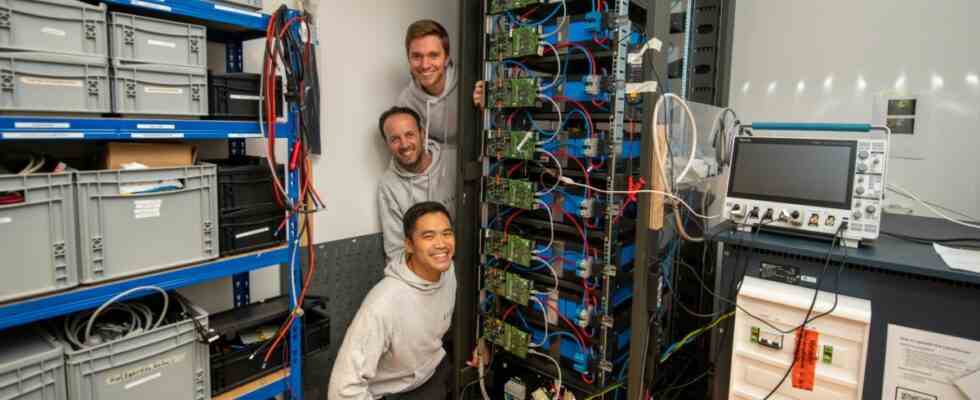Alternative forms of drive have not only been in demand since the rise in fuel prices: in 2021, according to the Federal Motor Transport Authority, the number of newly registered electric cars in Germany almost doubled compared to the previous year. With the growing number of e-cars, the question increasingly arises as to what happens to the batteries once they have had their day. After about ten years, their performance has usually dropped to between 70 and 80 percent, depending on the manufacturer – too weak for further use on the road, but also too strong to throw away. Nevertheless, many old batteries from electric cars are currently being disposed of.
The young company Stabl Energy offers a possible alternative: Thanks to its technology, used batteries can easily be installed in storage systems and thus given a second life. The system can then store energy, for example, obtained from environmentally friendly but not permanently available sources such as wind or sun. For the first time, the team can now prove that the approach works outside of the research laboratory. In cooperation with a start-up from the DB Bahnbau Group, Stabl recently set up one of its storage facilities with old batteries from Kia electric cars at the Euref campus in Berlin.
Nam Truong, Christoph Dietrich, Arthur Singer and Martin Sprehe founded the start-up in 2019 at the Bundeswehr University in Neubiberg under the name M-bee. The goal then as now: conserve resources and make a contribution to the energy transition with your innovations. This should succeed with a technology that makes battery storage more efficient, cheaper and safer. Its principle breaks with the functionality of conventional storage systems, which are structured like a chain with a central inverter. This creates numerous problems, for example a high susceptibility to faults: if a module breaks, the entire system fails. Stabl therefore organizes its storage in individual, independent battery modules, each of which is equipped with its own circuit board. They can be dynamically interconnected; a large, central inverter is no longer required.
In classic energy storage systems, the weakest link determines the performance
Another advantage: the installation of used batteries from e-cars is possible without any problems, as founder Nam Truong says. This is difficult in classic storage systems: due to the structure of the chain, the weakest link determines the performance of the entire system. However, used batteries usually have different states, partly due to fluctuations in production – the capacity of the best would therefore be wasted to a certain extent. According to Truong, however, the Stabl approach can bridge such differences and also makes it possible to combine modules with different residual outputs without risking malfunctions and failures.
The team has now used 24 used batteries from old Kia electric cars for the storage facility that it has set up on the Berlin Euref campus. A second storage facility will soon be tested in Switzerland, and according to Truong, numerous other projects are in the pipeline. For example, the storage units near train stations can be used for charging stations so that commuters can cover the last distance between the train and home without emissions.
Before their technology was ready, the young entrepreneurs had to overcome numerous hurdles since the company was founded: “The last three years have involved a great deal of effort,” says Truong. A lot took a lot longer than expected – such as the certification process to be able to bring the memory to the market. Certain problems were not taken into account. However, the product is now ready for series production, says Truong, and the company’s focus is shifting from development to marketing. “The next big challenge will be getting our memory into the field in large numbers.”
Stabl’s technology can bring great benefits, especially in times of energy crisis, as Truong says. The start-up’s battery storage is only “a drop in the ocean”, but the system can be used to store energy from alternative sources such as the sun or wind and thus absorb peak power consumption, for example. “That can help to gradually become less dependent on gas.”

